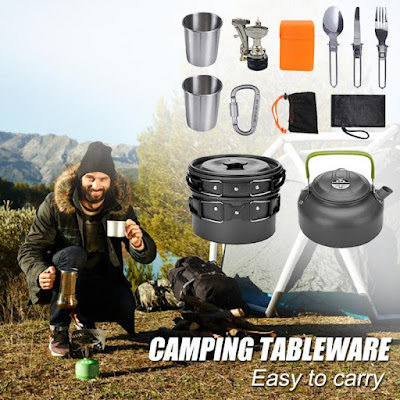best ways to tie a fishing hook
Mastering the Art of Tying Fishing Hooks: Essential Techniques for a Successful Catch
One of the fundamental skills every angler must possess is the ability to tie a fishing hook properly. A well-tied hook ensures that your bait stays secure, increasing your chances of landing that prized catch. In this article we will explore the best ways to tie fishing hooks using techniques that will keep you hooked up and ready to reel in your next big fish.
the first way to tie a fishing hook
1-The Improved Clinch Knot
The Improved Clinch Knot is a versatile and reliable knot suitable for securing a variety of fishing hooks. Begin by passing the tag end of your fishing line through the eye of the hook. Wrap the tag end around the standing line 5-7 times, ensuring the wraps are tight and close together. Pass the tag end through the loop near the hook eye and then back through the large loop formed. Moisten the knot, tighten it by pulling the tag end and standing line simultaneously, and trim any excess. The Improved Clinch Knot its a excellent and is perfect way to tie a fishing hook types of fish.
2-The Palomar Knot
The Palomar Knot is renowned for its simplicity and high strength. Start by doubling about 6 inches of your fishing line and passing the loop through the eye of the hook. Tie an overhand knot with the doubled line, creating a larger loop. Pass the hook through the loop and gently pull both ends of the line. Ensure the knot tightens snugly against the eye of the hook. Trim any excess line, and you're ready to bait your hook. The Palomar Knot is known for its exceptional reliability and is highly recommended when fishing with braided lines.
3-The Snell Knot
The Snell Knot is particularly effective when using a bait hook. It allows the hook to point upward, increasing the chances of hooking a fish in the corner of the mouth. Begin by passing the tag end of the line through the hook eye, leaving a length of line extending beyond the hook. Hold the hook with the line hanging beneath it. Create a loop by wrapping the tag end around the hook and the line, making 5-7 turns. Pass the tag end through the loop nearest the eye of the hook and tighten the knot by pulling the tag end and standing line simultaneously. Trim any excess line, and you're ready to attach your bait. The Snell Knot provides excellent hooking capabilities, particularly when using live or natural baits.
4-The Uni Knot
The Uni Knot, also known as the Duncan Loop, is a versatile knot that can be used to tie fishing hooks, attach lures, or connect fishing line to swivels or snaps. Begin by passing the tag end of the line through the eye of the hook, then make a loop with the tag end alongside the standing line. Make 5-7 wraps around both the lines and through the loop. Moisten the knot and pull the tag end to tighten the wraps. Slide the knot towards the eye of the hook and trim any excess line. The Uni Knot is highly reliable and maintains excellent strength, making it a go-to choice for many anglers.
Tips for Any Fishing Knot
When it comes to tying fishing knots, there are several important tips that every angler should keep in mind. Firstly, ensure that you moisten the knot before tightening it. This reduces friction and allows the knot to cinch down smoothly, reducing the risk of weak spots or breakage. Additionally, always trim any excess tag end after tying the knot. This prevents the tag end from interfering with the line or causing tangles. Secondly, practice tying knots before heading out on your fishing trip. Familiarize yourself with the specific knots you plan to use, and gain confidence in your technique through repetition. Lastly, inspect your knots regularly throughout the fishing day. This simple step helps detect any signs of wear or damage, allowing you to re-tie the knot if necessary. By following these tips, you'll ensure that your fishing knots are strong, reliable, and ready to withstand the challenges of landing that trophy fish.
fishing rod
Your Trusty Companion for Angling Adventures
A fishing rod is an essential tool that every angler relies upon for their fishing adventures. It serves as an extension of your arm, allowing you to cast your line with precision and reel in those prized catches. Let's explore the key components and features of a fishing rod that make it a trusted companion on the water.
A.The Basics
A fishing rod consists of several key components, including the rod blank, reel seat, guides, and handle. The rod blank is the main shaft of the rod, typically made from materials like graphite, fiberglass, or a combination of both. The reel seat is the part where the fishing reel is attached, ensuring a secure connection. Guides, typically made of ceramic or metal, are the rings that guide the fishing line along the rod's length. The handle provides a comfortable grip for the angler and can be made of materials like cork, foam, or EVA.
B.Types of Fishing Rods
There is a wide variety of fishing rods available, each designed for specific fishing techniques and target species. Some common types include spinning rods, baitcasting rods, fly rods, and surf rods. Spinning rods are versatile and popular, suitable for a wide range of fishing applications. Baitcasting rods are preferred for more precise casting and control, commonly used for freshwater fishing. Fly rods are specifically designed for fly fishing, utilizing the weight of the line to cast lightweight flies. Surf rods are longer and designed for casting in surf conditions, enabling anglers to target fish from the shore.
C.Choosing the Right Rod
Selecting the right fishing rod depends on various factors, such as the fishing technique, target species, and personal preference. Consider the rod's power (strength) action (flexibility) length, and weight rating. Lighter rods are ideal for smaller fish or finesse techniques, while heavier rods provide the backbone needed to handle larger, hard-fighting fish. The action of the rod determines how much it bends under pressure, with options ranging from fast action (bends mostly at the tip) to slow action (bends throughout the length). The length of the rod affects casting distance and leverage, with longer rods providing greater casting range and control.
D.Maintenance and Care
To keep your fishing rod in optimal condition, proper maintenance is essential. After each fishing trip, rinse your rod with freshwater to remove saltwater or debris. Inspect the guides for any signs of damage or wear, as these can affect the line's smooth movement. Avoid storing your rod in extreme temperatures or places where it can be easily damaged. When not in use, store your rod in a rod case or holder to protect it from accidental bumps or impact.
Conclusion:
The fishing rod is more than just a tool; it's a companion that enhances your angling experience. Understanding the different types of rods, choosing the right one for your needs, and properly maintaining it will ensure that your fishing rod remains reliable and ready for your next adventure. So grab your rod cast your line and let the journey begin. Tight lines and happy fishing!

.webp)
.webp)
.webp)


